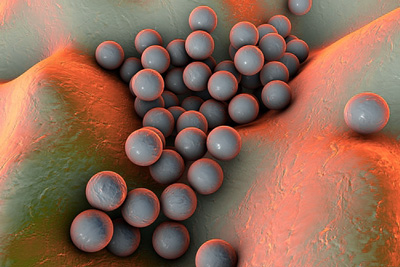FDA accepts Teflaro sNDA for filing
Posted: 16 February 2016 | | No comments yet
If approved, this filing will expand the label of Teflaro beyond adults to include the treatment of children two months of age and older…


The US Food and Drug Administration (FDA) has accepted for filing the Allergan‘s supplemental New Drug Application (sNDA) for Teflaro (ceftaroline fosamil).


If approved, this filing will expand the label of Teflaro beyond adults to include the treatment of children two months of age and older with acute bacterial skin and skin structure infections (ABSSSI) including infections caused by methicillin-resistant Staphylococcus aureus (MRSA) and community-acquired bacterial pneumonia (CABP) caused by Staphylococcus pneumoniae and other designated susceptible bacteria.
“The impact of ABSSSI and CABP are significant among children, particularly those under the age of five who are often hospitalised due to these infections. This acceptance brings us one step closer to providing another choice for physicians to properly treat paediatric patients with ABSSSI and CABP, including those infections caused by difficult-to-treat pathogens,” said David Nicholson, Executive Vice President & President, Global Brands Research and Development, Allergan.
sNDA application based on results from 5 clinical studies of Teflaro
Teflaro is a bactericidal cephalosporin with activity against both Gram-positive and Gram-negative pathogens.
This application was based on results from five clinical studies evaluating Teflaro in paediatric patients, including one active-controlled study in subjects with ABSSSI, two active-controlled studies in paediatric patients with CABP and two pharmacokinetic (PK) studies. In the ABSSSI active-controlled study the efficacy and safety of Teflaro were compared with vancomycin or cefazolin with or without aztreonam. In the CABP studies, Teflaro was compared with ceftriaxone or ceftriaxone plus vancomycin.
In the ABSSSI paediatric trial, the clinical response at Study Day 3, as measured by cessation of lesion spread and absence of fever, was 80.4% in patients treated with Teflaro and 75% for the comparator group.
The CABP paediatric trials evaluated the efficacy and safety of two separate dosing regimens of Teflaro. In the trial submitted for this paediatric filing, the clinical response at Study Day 4, as measured by improvement in at least two out of seven symptoms (cough, dyspnea, chest pain, sputum production, chills, feeling of warmth/feverish and exercise intolerance or lethargy) as well as by no worsening of these symptoms, was 69.2% for patients treated with Teflaro and 66.7% in the comparator group.



